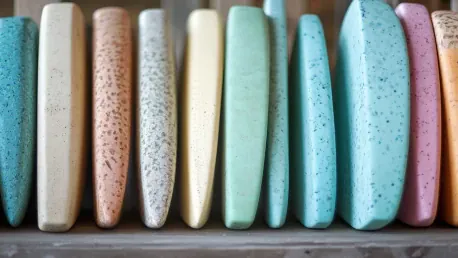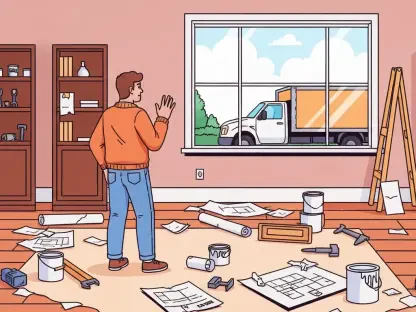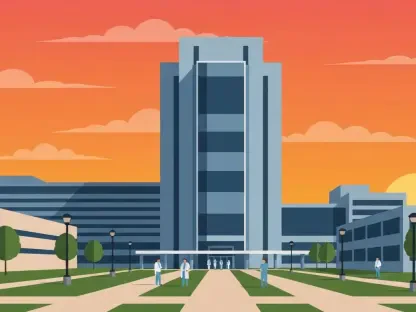In an innovative twist that addresses both housing shortages and environmental concerns, the Hawaiian architecture firm Off Grid has developed a creative solution called “Surf Blocks.” These building materials are created by repurposing polystyrene foam offcuts from surfboard manufacturing, offering a sustainable, cost-effective, and highly functional alternative to traditional cinder blocks. This breakthrough is not only beneficial for construction but also aligns with larger themes of sustainability and the circular economy, showcasing how waste can be reimagined into valuable products.
Tackling Housing and Landfill Issues
Affordable and Efficient Building Material
Surf Blocks have been engineered to outperform traditional cinder blocks in several key aspects. Not only are they cheaper, but they also offer superior insulating properties, making them a more energy-efficient choice for construction. This is particularly valuable in Hawai‘i, where import costs for construction materials are significantly high, contributing to the overall expense of building projects. The reduced costs associated with Surf Blocks could markedly alleviate the financial burden of housing development in the region, making homes more accessible to a broader population.
Another compelling advantage of Surf Blocks is their ability to resist fires and termites. In areas prone to natural disasters such as wildfires, the fire resistance feature is crucial. Recent destructive fires in Maui have highlighted the need for materials that can withstand such conditions. Furthermore, termite resistance is vital in tropical climates like Hawai‘i’s, where the risk of termite infestation is high. These attributes not only enhance the durability and safety of constructions but also contribute to the longevity of buildings, reducing the need for frequent repairs and replacements.
Environmental Considerations and Carbon Footprint
One of the most environmentally significant aspects of Surf Blocks is their reduced concrete usage. Typically, the manufacture of cinder blocks is heavily reliant on concrete, which has a high carbon footprint due to the energy-intensive production process. Surf Blocks require about one-third of the concrete used in traditional cinder blocks, substantially lowering the carbon emissions associated with their production. This reduction aligns with global efforts to minimize the carbon footprint of various industries, particularly construction, which is notorious for its environmental impact.
Surf Blocks also address Hawai‘i’s persistent challenges with landfill space. The islands generate a considerable amount of foam waste from surfboard manufacturing. While foam is lightweight, its disposal is problematic because it occupies significant space in landfills. By converting these foam offcuts into practical building materials, Off Grid effectively mitigates this issue, contributing to better waste management practices within the region. This solution perfectly encapsulates the principles of the circular economy, where waste is repurposed instead of discarded, driving sustainability forward.
Broader Implications
Sustainability and Circular Economy
The development of Surf Blocks exemplifies a broader trend toward finding localized solutions to global environmental and economic challenges. By repurposing waste materials into valuable products, the initiative promotes a circular economy, offering a sustainable path forward for the construction industry. The use of Surf Blocks presents a template for other regions grappling with similar issues, encouraging innovation and adaptability in addressing local challenges through eco-friendly methods.
Additionally, this innovation ties into wider themes of sustainability by demonstrating how inventive approaches can tackle multiple issues simultaneously. Beyond just solving housing shortages and waste management problems, Surf Blocks highlight the potential of creative thinking in revolutionizing conventional practices. This could inspire further research and development in other sectors, pushing the boundaries of what can be achieved through sustainable practices.
Future Prospects and Community Impact
The introduction of Surf Blocks has the potential to reshape Hawai‘i’s construction landscape profoundly. As the demand for affordable housing continues to rise, adopting Surf Blocks can help meet this demand more effectively. Moreover, the environmental benefits associated with reduced concrete usage and improved waste management practices position Surf Blocks as a forward-thinking solution with long-term positive impacts.
Community engagement and education are also vital components of this initiative. By raising awareness about the benefits of Surf Blocks, Off Grid can foster a culture of sustainability within local communities. Informing residents about how their choices contribute to broader environmental goals can encourage more widespread adoption of eco-friendly practices. Over time, this could lead to more sustainable lifestyles and a stronger commitment to preserving Hawai‘i’s natural beauty.
Paving the Way for a Greener Future
In a groundbreaking effort addressing both housing shortages and environmental issues, Hawaiian architecture firm Off Grid has introduced “Surf Blocks.” These innovative building materials are crafted by repurposing polystyrene foam offcuts from surfboard production. This development offers a sustainable, cost-effective, and highly functional alternative to traditional cinder blocks. Beyond construction, Surf Blocks contribute to broader themes of sustainability and the circular economy. They exemplify how waste materials can be transformed into valuable products, effectively reducing environmental impact. Off Grid’s initiative is a noteworthy example of eco-friendly innovation in the construction industry. By turning manufacturing waste into useful building materials, the firm is not only tackling the housing crisis but also promoting environmental stewardship. Their approach places emphasis on recycling and repurposing, ultimately encouraging more sustainable building practices and showcasing how creative thinking can lead to impactful solutions.









